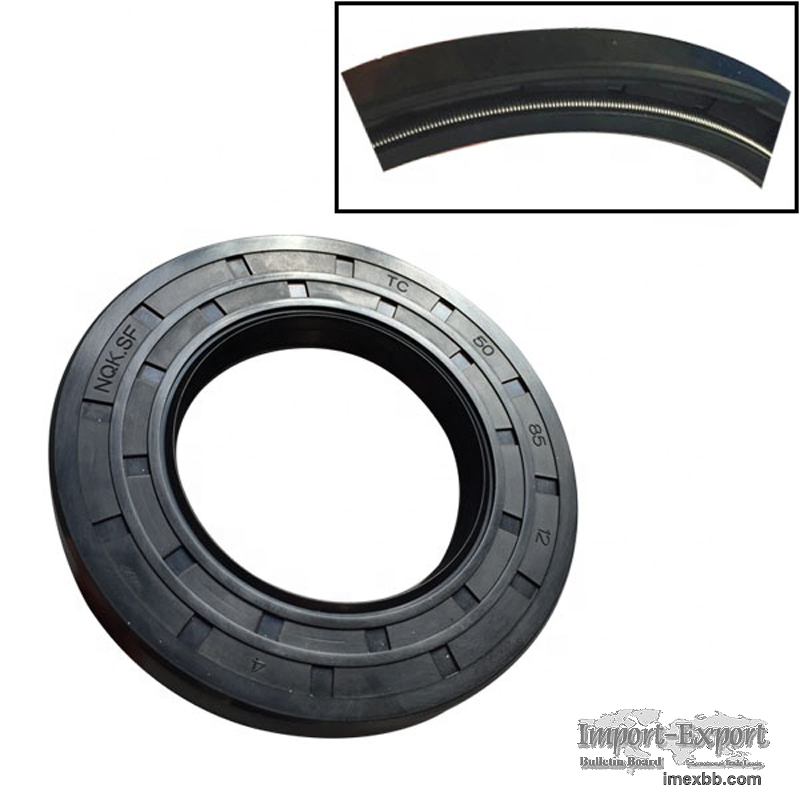 |
 |
Home > Offers to Sell > Others & Excess Inventory > Others
| Contact: | junyingliu |
|---|---|
| Company: | Xingtai Shanfeng special rubber products Co., Ltd |
| Hetou Industrial Zone, Renze District, Xingtai City, Hebei Province | |
| Xingtai City, Hebei | |
| China | |
| Phone: | 18713908608 |
| E-Mail: | |
| Date/Time: | 8/1/23 2:39 GMT |
NQK.SF With Competitive Price NBR FKM Rubber TC Oil Seals
An oil seal is an essential component in numerous machinery and automotive
applications, preventing leakage of lubricants and fluids. Properly sizing an
oil seal is crucial to ensure optimal performance and prevent any potential
leaks. In this article, we will explore the step-by-step process of correctly
sizing an oil seal.
The first step in sizing an oil seal is to determine the shaft diameter.
Measure the diameter of the rotating shaft that the seal will be fitted onto
using a precise measuring tool, such as a caliper or micrometer. Ensure that
the measurement is accurate and take multiple readings to confirm the diameter.
Once you have the shaft diameter, the next step is to measure the seal bore
diameter. This represents the inner diameter of the sealing lip where it comes
into contact with the shaft. It is important to measure the seal bore diameter
accurately as any deviation can lead to leakage. Again, use a precise measuring
tool to obtain an accurate measurement.
After obtaining the shaft diameter and seal bore diameter, the next step is
to calculate the correct seal width. The seal width refers to the distance
between the outer edges of the seal. It is crucial to choose the appropriate
seal width to ensure proper sealing and lubrication retention. The ideal seal
width should be slightly greater than the gap between the sealing surfaces.
Additionally, it is important to consider the type of seal material for
specific applications. Different materials, such as rubber,
polytetrafluoroethylene (PTFE), or silicone, offer unique properties and are
suitable for different operating conditions. Factors such as temperature,
pressure, and chemical compatibility should be taken into account when choosing
the appropriate seal material.
Furthermore, it is worth mentioning that seals with additional features,
such as dust lips or spring-loaded elements, may be necessary in certain
environments or applications. These features enhance the sealing performance by
preventing contaminants from entering and improving the seal's ability to
maintain contact with the shaft.
Once you have gathered all the necessary measurements and considered the
specific requirements of your application, consult the manufacturer's
specifications or use one of the available online calculators to determine the
appropriate oil seal size. It is crucial to find the right balance between a
tight seal to prevent leakage and excessive interference that may cause
premature wear or damage to the seal or shaft.
Sizing an oil seal correctly is a crucial step to ensure effective sealing
and prevent any potential leaks. By accurately measuring the shaft and seal
bore diameter, calculating the seal width, selecting the appropriate seal
material, and considering additional features, you can determine the optimal
oil seal size for your specific application. Remember, precise measurements and
careful consideration of the operational conditions are key to obtaining
reliable and efficient sealing performance.
Minimum Order: 100 pieces
SOURCE: Import-Export Bulletin Board (https://www.imexbb.com/)
Similar Products:Not exactly what you are looking for? Post an Offer to Buy!
![]()
© 1996-2010 IMEXBB.com. All rights reserved.
|
|
|





